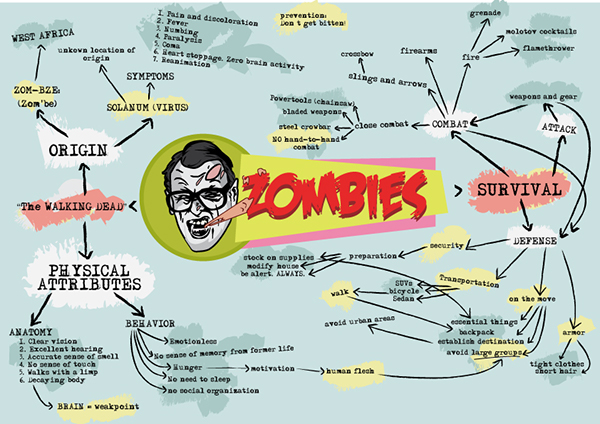A concept map is a type of graphic organizer - and a graphic organizer is basically just a way to represent ideas (and their relationships) in a visual way.
Usually, these ideas are put into circles or boxes (called nodes), and lines are drawn between the nodes. You may want to make a note on the line (or as part of the line) to describe the connection or relationship between the ideas. Here's an example of a concept map in this format:

Gr 8 - Ch 3 - Microorganisms. By Siyavula Education. Licensed under a CC BY: Attribution 2.0 Generic license.
Here's an example that doesn't use that format:

Zombie Concept Map. By Romina Militante. Licensed under a CC BY-NC-ND 4.0 license.
You can use:
"How do I put my map together?" steps adapted from:
Study Effectively: Creating a Concept Map. By the University of Guelph Library. Licensed under a Creative Commons Attribution-NonCommercial-ShareAlike 4.0 International License.
